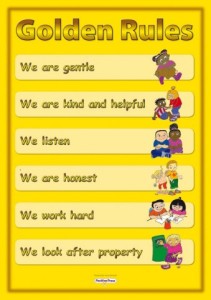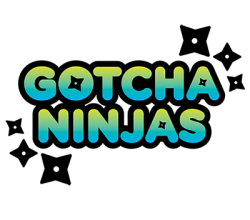Positive Behaviour Management
The code of behaviour at Powerstown ETNS is based on the principle of equal respect for both children and their families and for the staff of the school, both teaching and non teaching as outlined in our school mission statement. The purpose of our Code of Behaviour is to promote positive behaviour and to allow our school to function in an orderly and harmonious way, in line with our ethos as an Educate Together school.
To promote the development of positive behaviour in children and young people Powerstown ETNS must work with children to identify goals and boundaries for their behaviour and then working in partnership to implement these. We must also supporting children to understand and manage their own behaviour and to develop positive behaviour.
In order to this, we have implemented numerous strategies at class and school level for the children.
Golden Time helps teachers and classes achieve thier full potential! With Golden Time teachers tend to spend less time on behavioural issues and more time teaching. Golden Time is a whole school activity session to celebrate keeping the Golden Rules. Golden Time activities are special activities that the children have chosen to do. With a consequence for their actions, children learn about the difference between positive behaviour and keeping to the golden rules, and disruptive or unhelpful behaviour that stops everyone moving forward.
Each class has a Golden Time Clock. Children, as a class, earn” Golden Time” throughout the school day for demonstrating positive behaviours and postive work ethics. Each Golden Time Star is worth 5 minutes of Golden Time on a Friday. Children can earn up to 60 minutes of Golden Time throughout the week.
Gotcha Ninja is a classroom tool that helps teachers promote positive behaviour and pupils engagement in classroom and extra-curricular activities. Children earn individual points for displaying positive behaviour, that are cumulative and can earn rewards at the end of the week. Rewards include sit on teacher’s chair, homework pass, wear sunglasses to school, wear a hat for the day etc. For more information go to http://www.gotchaninjas.com
The behaviour traffic light is a system for addressing positive behaviours. This is a level system in which a child earns privileges at different levels depending on his or her behaviour. In this system, the levels of behaviour correspond to different levels on the “traffic light” – green, orange, and red. Green is the highest level of privileges (when the child is behaving well). All children start each day with their name is green. Yellow is the next level (when the child is engaging in minor problem behaviours), and red is the level on which the child is engaging in more severe problem behaviors, such as a continously breaking school rules, aggressive behaviour.
In Senior Classes (3rd – 6th class), the traffic light system is developed to include a two tier system. Yellow – Blue – Green – Orange – Red. Green, orange and red levels are used in the same way as Junior Classes. However, postitive behaviours are rewarded further with children being able to move to blue and then yellow.
The child moves his/her name to different levels in the system depending on his or her behaviour throughout the day. The goal of the system is to motivate the child to control his or her own behaviour in order to earn rewards and privileges. The focus is reinforcing the child for behaving appropriately.
Peer mediation is a process where those involved in a disagreement volunteer to discuss the issues and explore how best to take matters forward. It requires them to operate within our whole school ethos, which is itself restorative.
Children and young people can be more comfortable talking to someone their own age who understands their concerns and their perspective. Pupils learn to listen to others’ points of view and to accept differences.
How does it work?
In Term 2, 2014, 5th Class pupils are trained to act as mediators in a dispute and given the skills to enable them to be mediators without help from teachers. This empowers children and develops their sense of community and co-operation. The school and classroom become more peaceful, allowing more teaching and learning to take place.
Peer mediation takes place in a structured and safe environment with adult supervision nearby and always requires the participation of two peer mediators. Peer mediators deal with low-level disputes and always refer to school staff when a situation becomes too complex for them to handle.
What does it give the school?
Peer mediation can provide a safe structure for children and young people to solve their problems and learn to negotiate.
Peer support can reinforce a positive ethos and sustain pupil motivation, just as peer rejection could turn schools into cold and inhospitable places.
Peer mediation can build a supportive environment and help to sustain the overall wellbeing within a school.
What does it give the pupils?
All pupils learn the basic skills of communication and conflict resolution and develop the coping skills that they will need outside and beyond school.
Pupils who are trained as peer mediators develop additional skills in communication, negotiation, understanding and problem solving. Acting as mediators helps to promote young people’s emotional and social skills and builds self-esteem and confidence.
View our Peer Mediation Script below:
[gview file=”https://www.powerstownet.com/wp-content/uploads/2014/01/peer-mediation-script.pdf”]
Peer Mediation – Presentation for Parents
Stop Think Choose Do – Reflection Sheet.
Why should the child do it:
We learn from reflecting on experiences, good and bad. A Reflection Sheet is a very effective tool to use when a student is displaying unacceptable behaviours and can be used in conjunction with the Class Rules. The sheets can be used to help correct undesired behaviors and promote following the class and school rules and exhibiting expected and desired behaviours.
Teachers explain Stop, Think, Choose, Do approach to children at a class level each term and when required. See below for samples of how we explain it to children.
[gview file=”https://www.powerstownet.com/wp-content/uploads/2014/01/Stop-Think-Chosse-Do-Pictorial-Explanation.pdf”]
When should it be used:
- When students are exhibiting unacceptable behaviors.
- When students are not following school/class rules.
How does it work:
- The student is told to go to the reflection area within the classroom, or another room.
- The teacher explains briefly to the student why they are being sent and what behaviours or rules they were breaking.
- The student is withdrawn to reflect on his/her behaviour and completes the Reflection Sheet, discussing it with the Teacher after it is completed.
- There is a Junior and Senior Reflection sheet to ensure it is age appropriate and can be completed by the child.
- Children then give reflection sheet to parents and discuss actions/behaviours with parents. Parents are asked to sign the refelction sheet and return it to the school.
Reflection Sheet for Junior Infants – 2nd class pupils.
[gview file=”https://www.powerstownet.com/wp-content/uploads/2014/01/problem_solving_plan_juniors.pdf”]
Reflection Sheet for 3rd – 6th Class pupils.
[gview file=”https://www.powerstownet.com/wp-content/uploads/2014/01/problem_solving_plan_seniors.pdf”]
Leave a Reply
You must be logged in to post a comment.





No Responses